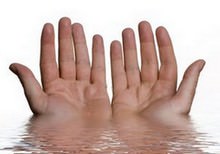This article is about how to perform Mnemonic Induction of Lucid Dreams(aka MILD) which was created by Dr Stephen LaBerge of The Lucidity Institute. LaBerge invented this method while at university in order to have lucid dreams on demand. It is very effective and ideal for beginners.
In essence, the MILD technique will train you to increase your self awareness, making it easier to recognize when you are dreaming. It also involves incubating a lucid dream with affirmations and programming your next dream to contain pre-determined dream triggers to prompt lucidity.
As you may already be aware, a mnemonic is any learning technique that aids memory. In this instance, you are planting a cue in your subconscious mind which helps you remember your intention to lucid dream and recognize when you're dreaming.
The following Mnemonic Induction of Lucid Dreams tutorial is aimed at beginners - there are no special requirements or skills needed. It's sectioned in four parts:
- Dream Recall
- Reality Checks
- Lucid Affirmations
- Visualize Your Dream
How to Have a Mnemonically Induced Lucid Dream
You can perform the first two steps of the MILD technique right now. The latter steps are for just before you go to sleep tonight. It involves meditation and visualization so it works best when you are physically and mentally relaxed and ready for sleep.
Step #1 - Dream Recall
It is especially important that you already have a decent dream recall rate - this means being able to remember and write down at least one dream every morning.
If you can't remember your dreams, then they are probably not very vivid, and so the likelihood of you becoming lucid within them is poor. What's more, if you do spontaneously have a lucid dream, you will not even be able to remember it!
There are some simple and powerful ways to improve your dream recall - for more advice read my article How to Remember Your Dreams - then come back here.
Step #2 - Reality Checks
Throughout the day, ask yourself "Am I dreaming?" and try to distinguish whether you're awake or dreaming with a simple physical action. This is called a Reality Check.
A reliable way to do this is set your digital watch to chime every hour. When it beeps I try to push two fingers of my right hand through my left palm. I also stop to ask myself (and I mean to really consider the question) "Is this real?" When I'm awake, nothing happens, of course. But when I'm dreaming, my fingers go right through my hand!
 This causes me to become lucid in my dream - and everything surges into focus. I suddenly become self-aware and conscious inside the dream and am able to control it.
This causes me to become lucid in my dream - and everything surges into focus. I suddenly become self-aware and conscious inside the dream and am able to control it.
A reality check is a simple way to trigger this moment of introspection. It is deceptively simple. Sometimes I try to float. Sometimes I just look at the palms of my hand (in the dream world, close attention to detail can prompt lucidity). Sometimes I just look at my digital watch (numbers and letters are often jumbled in non-lucid dreams).
You can choose any reality check you like, just be sure that the waking result differs from the dreaming result. By continually checking your waking reality, you are priming yourself for greater self-awareness in dreams. I recommend performing at least 10 reality checks per day, preferably more.
Step #3 - Lucid Affirmations
When you are lying in bed tonight, go through some lucid affirmations in your mind. This is really where the term Mnemonic Induction of Lucid Dreams comes from - you are programming commands into your memory, to be recalled later on in your dreams.
Repeat one or many of the following affirmations in your mind:
- Next time I'm dreaming, I will remember I'm dreaming
- The next scene will be a dream
- I will have a lucid dream tonight
- I'm dreaming now
Put real feeling into the words as you chant them in your mind. If you feel your mind start to wander, draw it back to the issue at hand. Stay focused. Repeat the affirmations until you feel like you are about to fall asleep (how long this takes depends on you personally; it may be 2 minutes or 10 minutes). Then proceed to the final step.
Step #4 - Visualize Your Dream
Now we can begin the visualizations; this is my favorite part of Mnemonically Induced Lucid Dreams. But only perform this step once you are deeply relaxed and feel you could drop off to sleep quite easily.
Imagine you are back in a recent dream - but this time you are going to re-live the ending differently. Visualize the scene in as much clarity and detail as you can remember, then look for a dream sign. This is some unusual character, location or object which reveals the dream to be mere fantasy; something you wouldn't see in real life. Then say to yourself "I'm dreaming!"
Although you are just day dreaming (and this is by no means a lucid dream) continue to experience an imagined lucid dream fantasy. Do whatever you would do if this were a real lucid dream. You might decide to fly and explore the landscape, or seek out a dream character.
During this process, you will likely fall asleep. That's ok. The primary purpose of Mnemonic Induction of Lucid Dreams is to have your very last thought before you go to sleep be about lucid dreaming. Mission accomplished! Later the same night (or in the morning) you have a much higher chance of becoming spontaneously lucid.
Occasionally, something amazing will happen. Your imaginary dream world will suddenly merge into a real lucid dream. Your body has fallen asleep but your mind - so captivated by the imagined dreamscape - remained conscious. You'll pop into the landscape and experience the dream with full intensity. When this happens, your MILD attempt has become a WILD (Wake Induced Lucid Dream). Result!
Tips on Mnemonic Induction of Lucid Dreams
During the 1970s, when Dr Stephen LaBerge was developing the MILD technique, he found that certain interruptions in regular sleep patterns improved success rates. These included waking up to have sex, vomit or meditate. This led him to conclude that: wakefulness, interjected during sleep, increases your chances of becoming lucid.
So, in order to have more lucid dreams with MILD, you may want to wake yourself up in the night and bring yourself to full consciousness for a few minutes. No need to induce vomiting! Simply spending 20 minutes reading about lucid dreaming works fine. As you return to sleep, perform the MILD technique.
Another way to exploit this principle is to practice MILD during afternoon naps. I find this most effective if I am a little sleep deprived from the night before, so it's easy to fall asleep during the afternoon. However I don't advocate forced sleep deprivation; simply make use of this principle if you happen to be particularly sleepy in the day.
For step-by-step tutorials on lucid dream exploration, check out The Lucid Dreaming Fast Track, my digital course for beginners and beyond.


 Having good prospective memory is like hearing an alarm going off inside your head just when you need it. It shouts with an inaudible voice: REMEMBER TO DO THAT THING, NOW! It appears to come from nowhere, but in reality this is your unconscious returning a pre-arranged memory cue. Remarkably, as I'll show in a moment, it is often linked to an internal brain clock which boasts an accuracy that is almost to-the-minute.
Having good prospective memory is like hearing an alarm going off inside your head just when you need it. It shouts with an inaudible voice: REMEMBER TO DO THAT THING, NOW! It appears to come from nowhere, but in reality this is your unconscious returning a pre-arranged memory cue. Remarkably, as I'll show in a moment, it is often linked to an internal brain clock which boasts an accuracy that is almost to-the-minute. But we needn't be so literal. You can imagine that cat exploding, or walking on chopsticks, or running up and jumping into your arms and licking your face. (It depends on your personal relationship with cats.) As long as the cat's doing something surreal and unexpected, it creates a more powerful memory that will grab your attention and trigger that prospective memory cue.
But we needn't be so literal. You can imagine that cat exploding, or walking on chopsticks, or running up and jumping into your arms and licking your face. (It depends on your personal relationship with cats.) As long as the cat's doing something surreal and unexpected, it creates a more powerful memory that will grab your attention and trigger that prospective memory cue. Look at any inanimate object that catches your gaze and that you can see clearly. Study its shape - is it flat, straight, jagged, curvy, round? And the texture - is it rough, smooth, rippled, soft, hard, solid? Notice how it is hit by the light; whether it is light or dark, dull or reflective, colorful or bland.
Look at any inanimate object that catches your gaze and that you can see clearly. Study its shape - is it flat, straight, jagged, curvy, round? And the texture - is it rough, smooth, rippled, soft, hard, solid? Notice how it is hit by the light; whether it is light or dark, dull or reflective, colorful or bland.
 Just as we did with the first exercise, start with very basic awareness, such as the physical sensation of lying in bed. Is the mattress soft or firm? Are the sheets cold or warm? Rough or smooth? Does your body ache or are you completely comfortable? Do you feel heavy or light?
Just as we did with the first exercise, start with very basic awareness, such as the physical sensation of lying in bed. Is the mattress soft or firm? Are the sheets cold or warm? Rough or smooth? Does your body ache or are you completely comfortable? Do you feel heavy or light?



 Now that you are getting sufficient REM sleep, here is a much more active way to remember your dreams. It involves a dream journal.
Now that you are getting sufficient REM sleep, here is a much more active way to remember your dreams. It involves a dream journal.